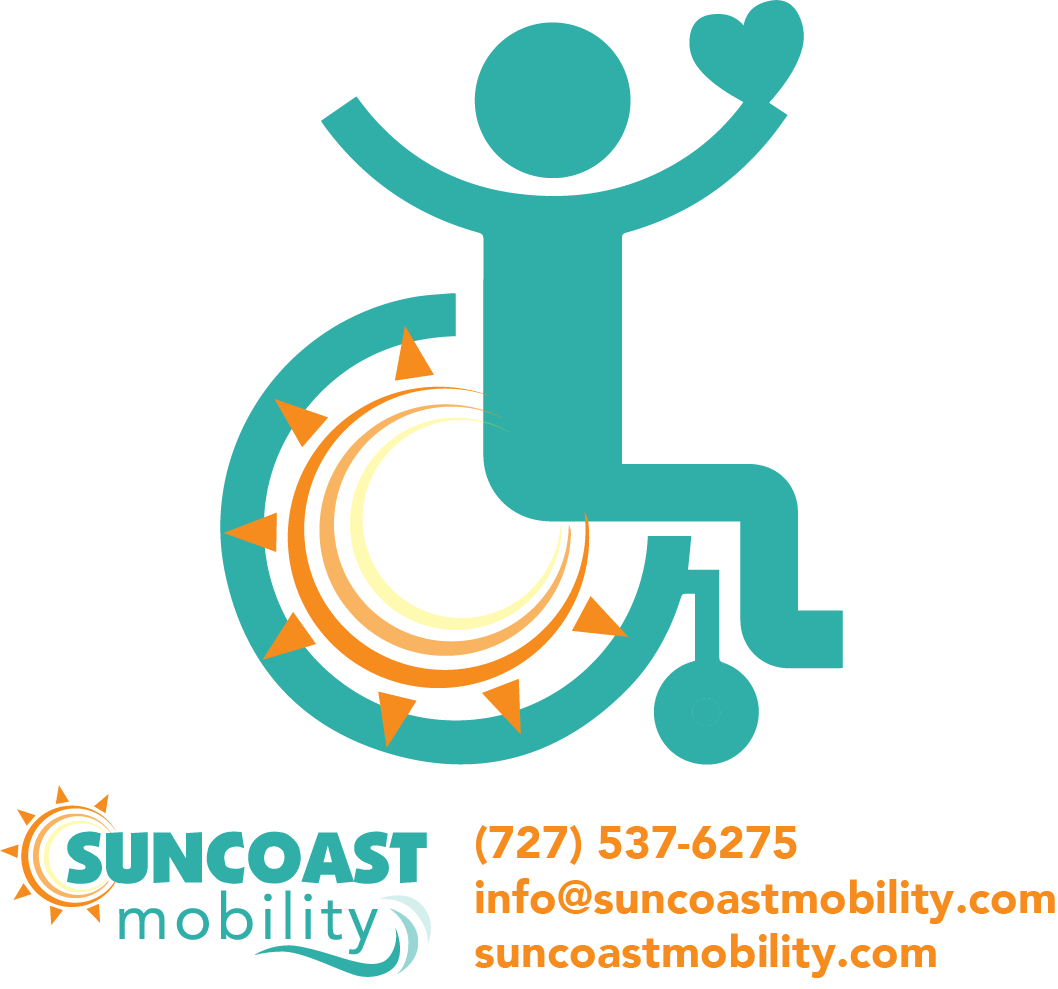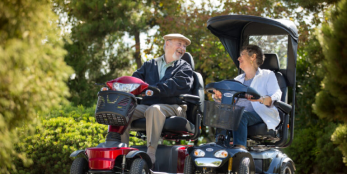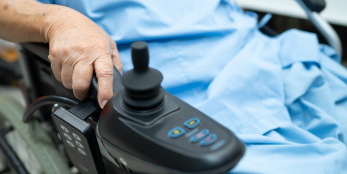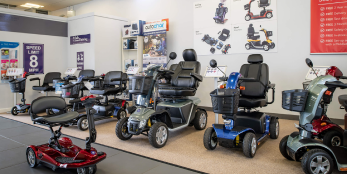Table of contents
Delta Airlines Mobility Scooter Policy: Complete Guide for Travelers
For travelers who rely on mobility scooters, planning a trip can feel overwhelming. Between airline rules, battery restrictions, and airport logistics, it’s essential to know exactly what to expect before heading to the airport. Delta Airlines is one of the largest carriers in the world and serves more than 200 million passengers each year—including thousands who use mobility devices.
This guide provides a detailed overview of the Delta Airlines mobility scooter policy, including how to prepare, what to expect at the airport, rules for batteries, and tips to make your journey stress-free.
Why Understanding the Delta Airlines Mobility Scooter Policy Matters
Mobility scooters are considered assistive devices, which means they are protected by law under the Air Carrier Access Act (ACAA). Delta is required to accommodate them, but there are important details passengers must know ahead of time:
Not every scooter fits in every aircraft cargo door.
Lithium-ion battery limits apply.
Special forms and handling instructions are often required.
By learning the details of Delta’s policy, you’ll avoid last-minute surprises and ensure a smoother travel experience.
Booking Your Flight and Requesting Assistance
Request Help in Advance
Delta recommends passengers request mobility assistance at least 48 hours before departure. This can be done in several ways:
Fly Delta App – Select “Accessible Services” under “Mobility Assistance.”
My Trips on Delta.com – Add information about your mobility scooter and assistance needs.
Accessibility Help Line – Call Delta directly to provide scooter details and request support.
Wheelchair & Scooter Calculator
Delta offers an online Wheelchair Calculator tool. By entering the dimensions and weight of your mobility scooter, you can see if it will fit through the aircraft cargo door. This is especially important for regional jets with smaller doors.
If your scooter does not fit, Delta may help rebook you on a larger aircraft or refund you, depending on the situation.
Arriving at the Airport with a Mobility Scooter
Check-In Process
When you arrive at the airport, notify a Delta agent that you are traveling with a mobility scooter. You will be asked to complete a Mobility Device Handling Form, which includes:
Your scooter’s make, model, and dimensions
Battery type and instructions for removal (if needed)
Steps for disassembly/reassembly if your scooter requires it
Attach this form securely to your scooter before handing it over to Delta staff.
Security & Boarding
You may ride your scooter through the terminal and all the way to the gate. At boarding time, Delta staff will gate-check the scooter, ensuring it is stowed safely in the cargo hold.
Your scooter should be returned to you either at the arrival gate or jet bridge, depending on the airport and aircraft type.


Delta Airlines Battery Policy for Mobility Scooters
One of the most important parts of the Delta Airlines mobility scooter policy involves batteries. Because most scooters run on lithium-ion or gel batteries, the airline has strict rules to ensure safe transport.
Lithium-Ion Batteries
Removable lithium batteries: Must be carried in the cabin as part of your carry-on baggage. The maximum capacity is 160 Wh per battery, and you are allowed up to two spare batteries between 100 Wh and 160 Wh.
Integral lithium batteries (non-removable): The scooter can travel in the cargo hold with no strict watt-hour limit, provided it is switched off and terminals are protected.
Wet-Cell Batteries (Spillable)
Must be disconnected and packed upright.
Delta may provide a special battery box if needed.
Terminals must be covered or taped to prevent accidental short circuits.
Dry-Cell / Gel Batteries (Non-Spillable)
These are the easiest to travel with.
They can often remain attached to the scooter during transport.
Terminals may still be taped or disconnected by Delta staff for safety.
Gate-Checking Your Mobility Scooter
One of the most convenient features of Delta Airlines’ accessibility services is the option to ride your mobility scooter all the way to the gate. This helps reduce fatigue, saves time, and allows you to remain independent while navigating busy airport terminals. Here’s what to expect during the gate-check process:
Step 1: Riding to the Gate
Instead of checking your scooter at the main counter, you’ll be allowed to use it throughout the terminal. You can ride your scooter:
-
Through security checkpoints (with TSA assistance if needed).
-
To restaurants, restrooms, and boarding areas.
-
Right up to the aircraft boarding door or jet bridge.
This is especially helpful in larger airports like Atlanta or Minneapolis, where distances between gates can be long.
Step 2: Tagging and Gate-Check Process
When it’s time to board:
-
A Delta gate agent will place a special mobility device tag on your scooter, similar to how strollers or wheelchairs are handled.
-
The tag identifies your scooter as an assistive device, ensuring it is handled with priority and returned to you as quickly as possible.
-
Ground staff will carefully move the scooter to the cargo hold once you transfer to an airport wheelchair or board the aircraft.
Because scooters can be heavier or have delicate components, it’s always a good idea to remind staff of any special handling needs (such as folding instructions or battery removal).
Step 3: Boarding the Aircraft
After your scooter is taken for loading, Delta staff will provide:
-
An airport wheelchair and attendant assistance to take you from the gate to your seat.
-
Pre-boarding privileges so you can get settled before general boarding begins.
This process is designed to minimize stress and give you extra time to get comfortable on the aircraft.
Step 4: Receiving Your Scooter at Arrival
Upon landing, your scooter is typically returned to you either:
-
At the jet bridge – right outside the aircraft door, so you can transfer directly back onto your scooter.
-
At the arrival gate area – where staff will bring it up as soon as possible.
In rare cases, especially at international airports, your scooter may be returned at baggage claim instead.
Pro Traveler Tips for Gate-Checking Scooters
-
✅ Confirm with the gate agent before boarding where your scooter will be returned—procedures vary by airport and aircraft type.
-
✅ Ask that your scooter be loaded last and unloaded first, which helps reduce the risk of damage and ensures quicker return.
-
✅ Carry essentials in a personal bag, since you may need to wait a few minutes for your scooter after landing.
-
✅ Stay patient but proactive—mobility devices are supposed to be prioritized under the Air Carrier Access Act, and Delta staff are trained to handle them first.
What If Your Scooter Doesn’t Fit?
Not every aircraft can accommodate every scooter. If your scooter is too large for the cargo door:
Delta may rebook you on a larger aircraft at no additional charge.
In some cases, a refund or partial credit may be provided.
Smaller, lightweight folding mobility scooters are generally easier to travel with and fit on most Delta aircraft.

Protecting Your Mobility Scooter During Travel
One of the biggest concerns for passengers traveling with a mobility scooter is the risk of damage during transport. While Delta Airlines has dedicated procedures to handle assistive devices with extra care, it’s always best to take proactive steps to protect your scooter before, during, and after your flight.
Before Your Flight: Preparing Your Scooter
Taking time to prepare your mobility scooter properly can greatly reduce the chance of mishandling. Here are some essential steps:
-
Take detailed photos – Snap clear pictures of your scooter from all sides, including close-ups of the wheels, armrests, battery compartment, and control panel. These photos provide valuable documentation in case you need to file a claim for damage.
-
Fold or disassemble if possible – Many lightweight and folding mobility scooters can be collapsed or broken down into smaller parts. Doing this ahead of time makes it easier for Delta staff to handle and stow the scooter securely in the cargo hold.
-
Label each component – Use luggage tags, stickers, or even masking tape to label parts like the seat, battery, and tiller. This makes reassembly at your destination faster and ensures nothing gets misplaced.
-
Attach handling instructions – If your scooter has a specific folding process, removable battery requirements, or sensitive components, provide written instructions. You can tape them to the scooter or attach Delta’s Mobility Device Handling Form with clear notes.
-
Protect fragile areas – Consider wrapping delicate parts like the joystick or display panel with bubble wrap or soft padding to prevent scratches and impact damage.
By preparing in advance, you not only protect your investment but also make it easier for Delta’s ground crew to care for your device properly.
Accessibility Services at the Airport
Delta handles more than 220,000 mobility devices every year. To improve service, the airline has implemented:
Specialized training for baggage and gate staff
White-glove handling procedures at major hubs
An Advisory Board on Disability, which provides ongoing feedback from travelers with mobility needs
Delta also provides assistance from curbside to boarding, including wheelchair escorts, boarding lifts, and early boarding for passengers with mobility devices.
Tips for a Smooth Journey with Your Mobility Scooter on Delta
Traveling with a mobility scooter doesn’t have to be stressful. Here are some quick tips:
Book early and notify Delta at least 48 hours before departure.
Use the Wheelchair Calculator to check your scooter’s fit.
Know your battery type and carry spare lithium batteries in your carry-on.
Arrive early at the airport to allow extra time for scooter handling.
Bring printed instructions for disassembly and reassembly.
Take photos before check-in for documentation.
Report issues immediately if your scooter is delayed or damaged.
Real Passenger Experiences
While Delta generally has a strong reputation for accessibility, passenger experiences can vary:
Some travelers praise Delta for professional staff and smooth gate-handling of scooters.
Others have reported delays or damage when traveling through busy hubs like Atlanta.
In one well-publicized case, a passenger with cerebral palsy said she was left unattended at the airport, prompting Delta to issue an apology and promise improvements.
The takeaway? Prepare in advance and be proactive to minimize potential problems.
Future of Accessibility at Delta
Delta is investing heavily in accessibility, including exploring wheelchair restraint systems that may allow passengers to remain in their personal power wheelchair during flight. While still in testing and awaiting certification, this innovation could revolutionize air travel for mobility device users in the future.
Quick Checklist: Traveling with a Mobility Scooter on Delta Airlines
-
✅ Request assistance at least 48 hours before travel
-
✅ Use Delta’s Wheelchair Calculator to confirm fit
-
✅ Complete the Mobility Device Handling Form
-
✅ Pack removable lithium batteries in carry-on (max 160 Wh, two spares allowed)
-
✅ Gate-check your scooter and confirm return location
-
✅ Take photos for documentation
-
✅ Report any issues before leaving the airport
What is the Delta mobility scooter policy?
Delta requires passengers traveling with electric scooters to notify them in advance—ideally at least 48 hours before departure. This allows the airline to confirm that your scooter can be safely accommodated, since acceptance depends on both cargo compartment size and compliance with battery regulations. When booking, you’ll need to provide your scooter’s dimensions, weight, and battery type. Delta also offers a helpful “Calculate Wheelchair or Assistive Device Fit” tool so you can check whether your scooter will fit through the aircraft cargo door.
For safety, batteries must be disconnected, and the terminals protected to prevent short circuits. In some cases, especially with lithium-ion batteries, the battery may need to be removed and carried in the cabin if it meets certain watt-hour requirements. Arriving at the airport early is important—Delta recommends checking in at least two hours before your flight, and no later than one hour before departure if you are checking in a battery-powered device.
While onboard, Delta does not provide power for mobility devices, but the airline does offer assistance for passengers with disabilities during boarding and throughout the journey. Upon arrival, your scooter will typically be returned to you as close to the aircraft door as possible unless you specifically request pickup at baggage claim. These policies are designed to prioritize both passenger safety and convenience, ensuring a smoother travel experience.
Can I take my mobility scooter on Delta airlines?
Delta transports all types of personal wheelchairs, including folding, collapsible, non-folding manual and electric/battery-powered wheelchairs, electric-powered carts and scooters, an additional wheelchair battery, as well as crutches, braces, or other prosthetic devices, provided they are traveling on the same flight as the passenger who depends on them.
How much does it cost to bring a mobility scooter on a plane?
Bringing a mobility scooter on a plane usually does not involve any additional cost, since airlines are required to accept them as assistive devices. However, you could face expenses if the battery needs replacement, if special packaging is required by the airline, or if damage occurs during transit. For peace of mind, it’s a good idea to have travel insurance that covers mobility equipment.
How do you check in a mobility scooter at the airport?
Airlines generally classify mobility scooters as assistive devices, meaning they are handled with extra care and are not subject to additional fees. If you are checking luggage, be sure to stop by the check-in counter to request a boarding tag for your scooter. This tag designates it as a mobility aid, helping airport staff manage it properly and return it to you smoothly.
Can I take a fold up mobility scooter on a plane?
You are allowed to travel with a mobility scooter powered by a 24V 11.5Ah battery. This can include different types, such as folding mobility scooters, which are designed to either fold automatically or be disassembled into compact pieces for easy storage. These models often feature a lower seat height, making them especially comfortable and convenient for travel.
Final Thoughts
Delta Airlines has one of the most comprehensive policies for mobility devices among U.S. carriers. The Delta Airlines mobility scooter policy is designed to keep passengers safe while ensuring they maintain independence throughout their journey.
By planning ahead—especially when it comes to battery rules, cargo fit, and handling instructions—you can enjoy a smooth, stress-free travel experience with your mobility scooter on Delta.
Whether you’re traveling domestically or internationally, Delta’s accessibility services make it possible to fly with confidence, knowing your mobility needs will be supported every step of the way.








